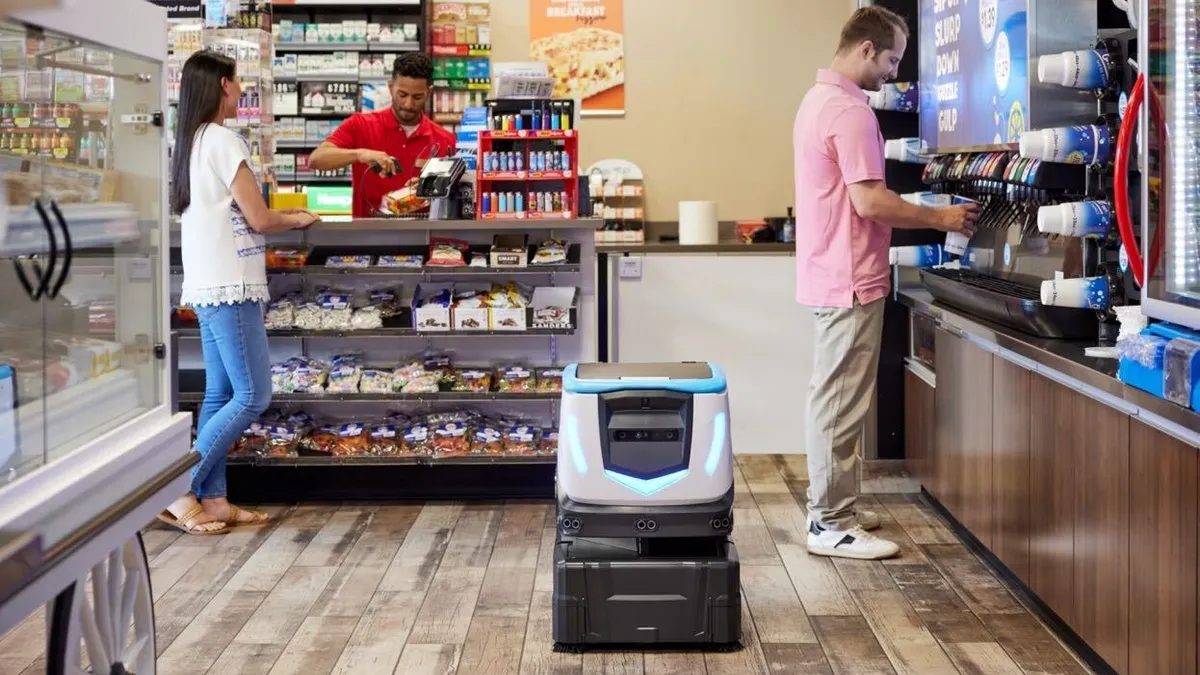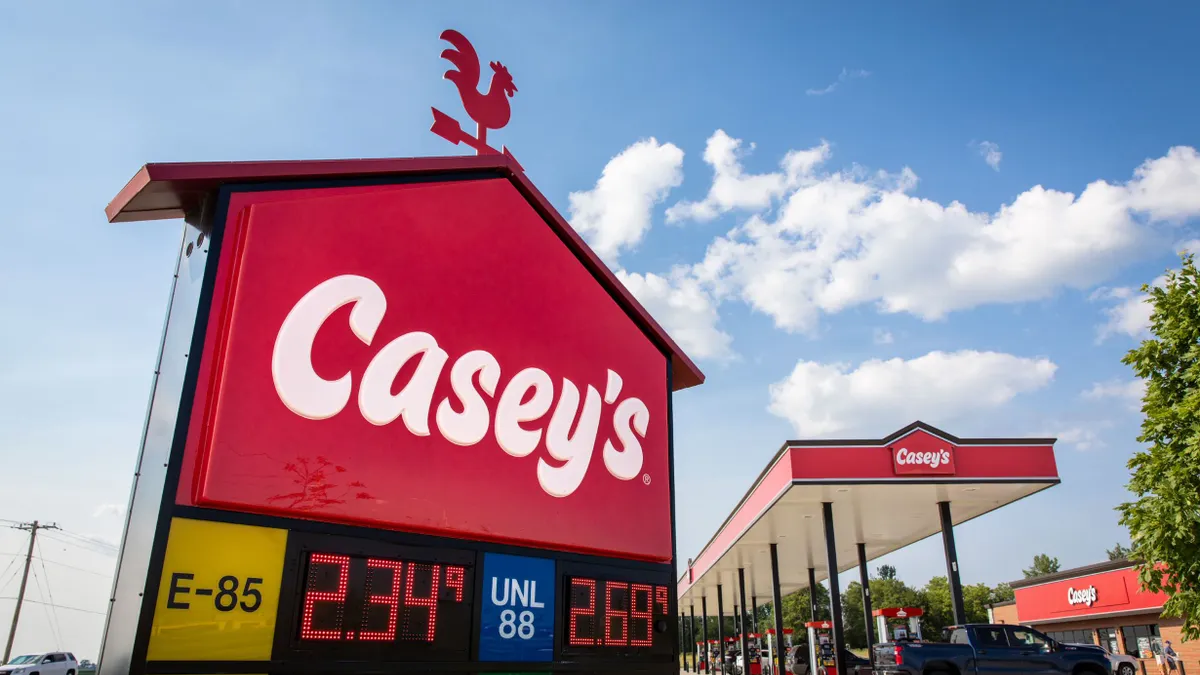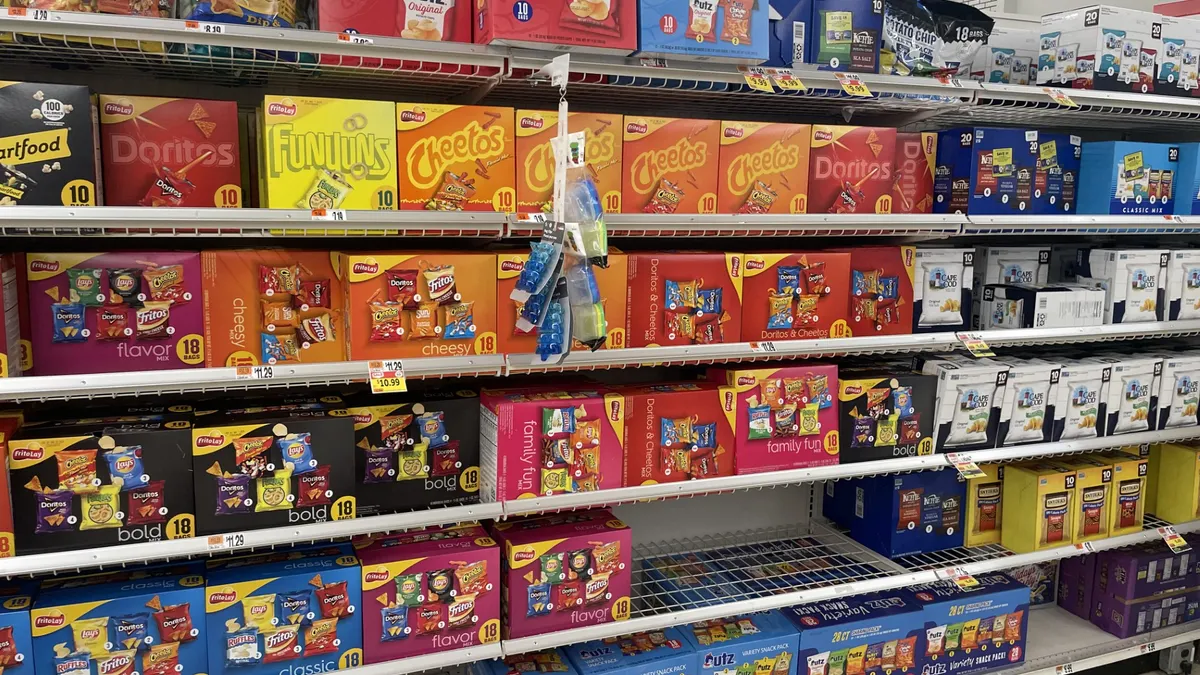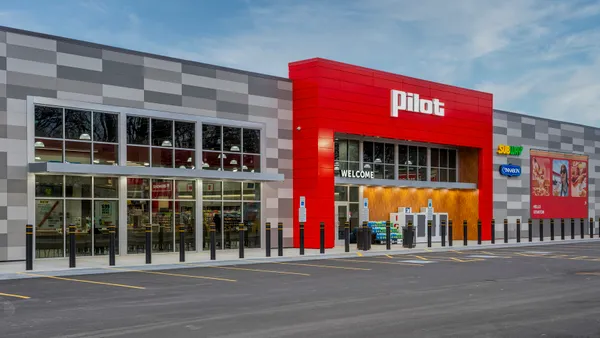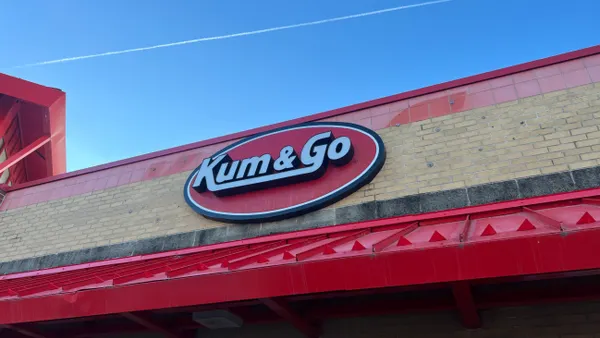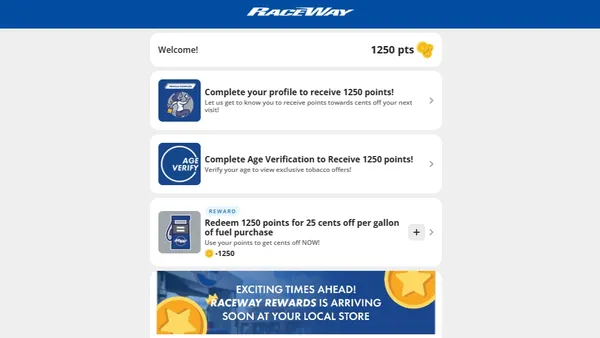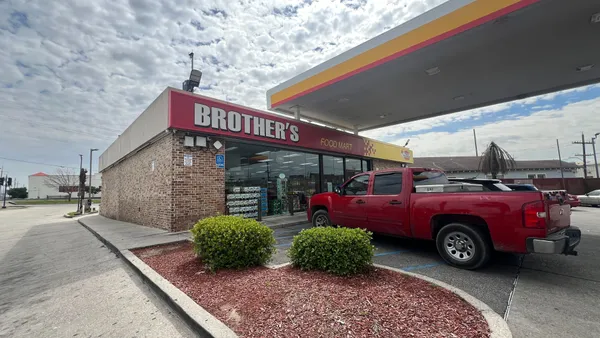New technology such as self-checkouts, food-ordering kiosks, digital media and even robot vacuum cleaners can help attract new customers while bringing in new revenue, assisting employees and making processes more efficient.
These innovations can potentially help give c-stores an edge in the crowded marketplace and help make shopping in their stores even faster and more convenient.
But c-store owners can’t simply buy a piece of technology, place it in their stores and expect it to improve their business and be eagerly adopted by customers. Integrating new devices into stores requires careful planning and thought, c-store design experts say.
Determining what technology an owner should buy and where to install it starts with figuring out the customer’s journey and thinking through what technology would benefit each location. Then it’s a matter of finding the right spot on the floor for the new tech, ensuring it’s right for their brand and thinking through the potential drawbacks it could bring.
When c-store clients are looking to deploy new technologies in their stores, Diebold Nixdorf starts by asking what issue they are trying to solve by using it, said Carsten Brase, head of retail consultancy at the Ohio-based retail technology company.
For example, Brase noted in an email, are they trying to reduce queues? Free up attendance? Improve customer experience?
“Understanding the answer to this question shapes the technological approach,” said Brase.
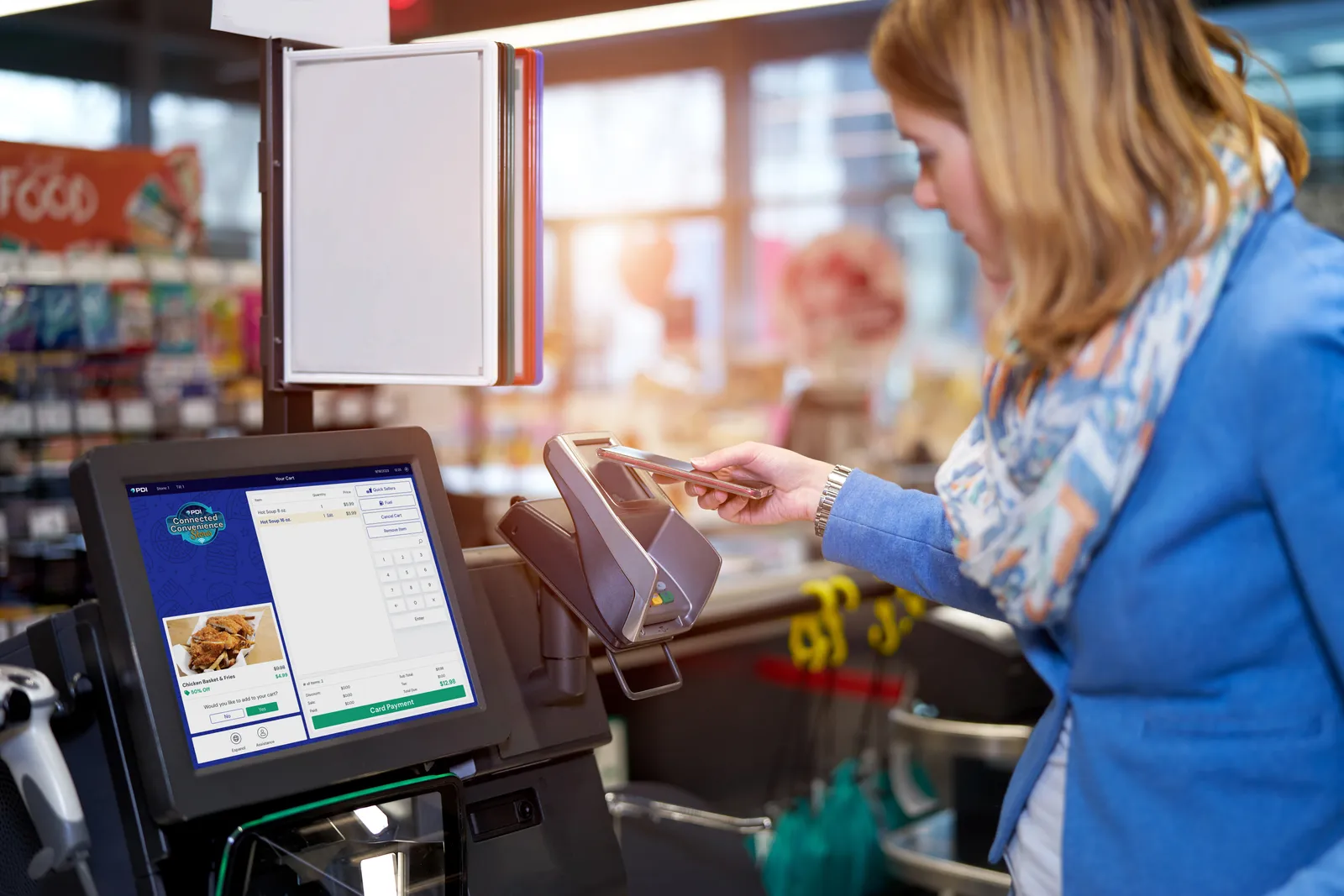
Understanding the customer journey
The first step to a retailer figuring out which technology should be integrated into their stores and how it fits into the overall layout is understanding their customers’ needs and their journey through the store, said Mike Lawshe, president of retail design and consulting firm Paragon Solutions.
C-store owners should factor in what their customers’ motivations are for coming into the store. Is the store located along an interstate with more foot traffic? Is it in a town where people are more likely to pick an item up at the cooler?
For example, travelers who stop at the interstate c-store are probably going to purchase items such as munchies or a cup of coffee for their trip as they walk out of the restroom, he said.
“You design the store to guide them in their natural customer journey past what you think will give us the greatest impulse with the greatest impact,” said Lawshe.
Understanding that customer journey helps stores ensure they are placing technology in a place that “will add value to the consumer but also make the process easy to manage from the attendant point of view,” added Brase.
Finding the right technology
When integrating any new technology, the focus should be centered around how it enhances customer service, as opposed to just how it can reduce costs, said Jeff Lenard, vice president of strategic industry initiatives at NACS, in an email.
Cost control for c-stores is critical since they are facing higher operating costs, Lenard said. But c-stores also have many convenience-based competitors, so any new technology has to deliver clear benefits to the customer, he added. And it can’t inadvertently minimize their advantage in the market, he added.
“If you are known for great interaction between staff and your customers, how do you play that interaction out in a purely machine-based transaction?” he asked.
C-stores should conduct an analysis of their size and profile, then look at a range of operational processes, such as their consumer structure, their shopping and payment habits, and peak times, said Brase. That analysis will ultimately dictate the technology solutions that make the most sense, he added.
The challenge c-stores face when integrating new technology is that while they might delight customers by bringing something new that enhances their experience, they don’t want to integrate it too early into the adoption curve, before it has been proven in an active operating environment, said Lenard.
“Ask your vendors how specifically the technology works in stores and get as many examples as possible,” said Lenard, adding that by doing that, retailers could also get new ideas to consider.

The right spot on the floor
C-stores should “lead with the new technology and embrace it,” and let customers see technology like food ordering kiosks early in each visit, said Lawshe. This way they have the opportunity to use it before they get to the more traditional forms of shopping.
That means placing self-ordering kiosks near the entrance, allowing the customer to make their choice before, perhaps, taking a seat in the quick-service restaurant area of the store, said Brase. But the kiosks still need to be close enough to the counter to make it easier for employees to help customers with different requests or address issues with an order, he added.
The optimal amount of space between self-checkouts and other areas of the store will vary based on the store and the existing layout, according to Lenard. “These decisions are best addressed after talking to potential vendors about your goals in launching self-checkout,” he said.
C-stores should keep self-checkouts in special areas separate from the traditional checkout counter, but still in an area customers walk by, said Lawshe. And stores should make those self-checkouts inviting, with an agent on standby, ready to engage with and assist customers, said Lawshe.
Consider the potential drawbacks
There are also drawbacks to consider when integrating technology such as ordering kiosks into a store. Because they’re efficient and can increase ordering points in stores, kiosks can shift the bottleneck for food from order placement to service and preparation, potentially leading to customer inconvenience, said Brase.
Jim Richards Sr., principal of PES Design Group’s Midwest Office, said he hasn’t yet seen the impact kiosks have on customer experience, but fears they could take away sales from the rest of the store.
If a customer enters the store and can simply order the things they need on the kiosk and check out, they’re not walking around the rest of the store, leaving less of an opportunity for impulse buying, he said.
“We lay out the stores specifically for a lot of impulse,” said Richards. The coolers are typically in the back of the store since they are one of the most used areas, and that placement forces customers to pass through gondolas filled with food items and other products as they make their way to get their drink then head back to the cash register.
“To have a kiosk, you’re kind of taking away that whole thing from the store,” he said.
Theft at self-checkouts can also be an issue, said Lenard. C-store chain QuickChek positions its units near the regular cashier-assisted checkouts, allowing for better oversight of the self-checkout, and allowing employees to quickly verify a customer’s age for age-restricted products, said Lenard.
Additionally, when installing digital media and screens throughout the store, owners should be careful not to overwhelm customers with “sensory overloads,” causing them to want to leave, said Lawshe.
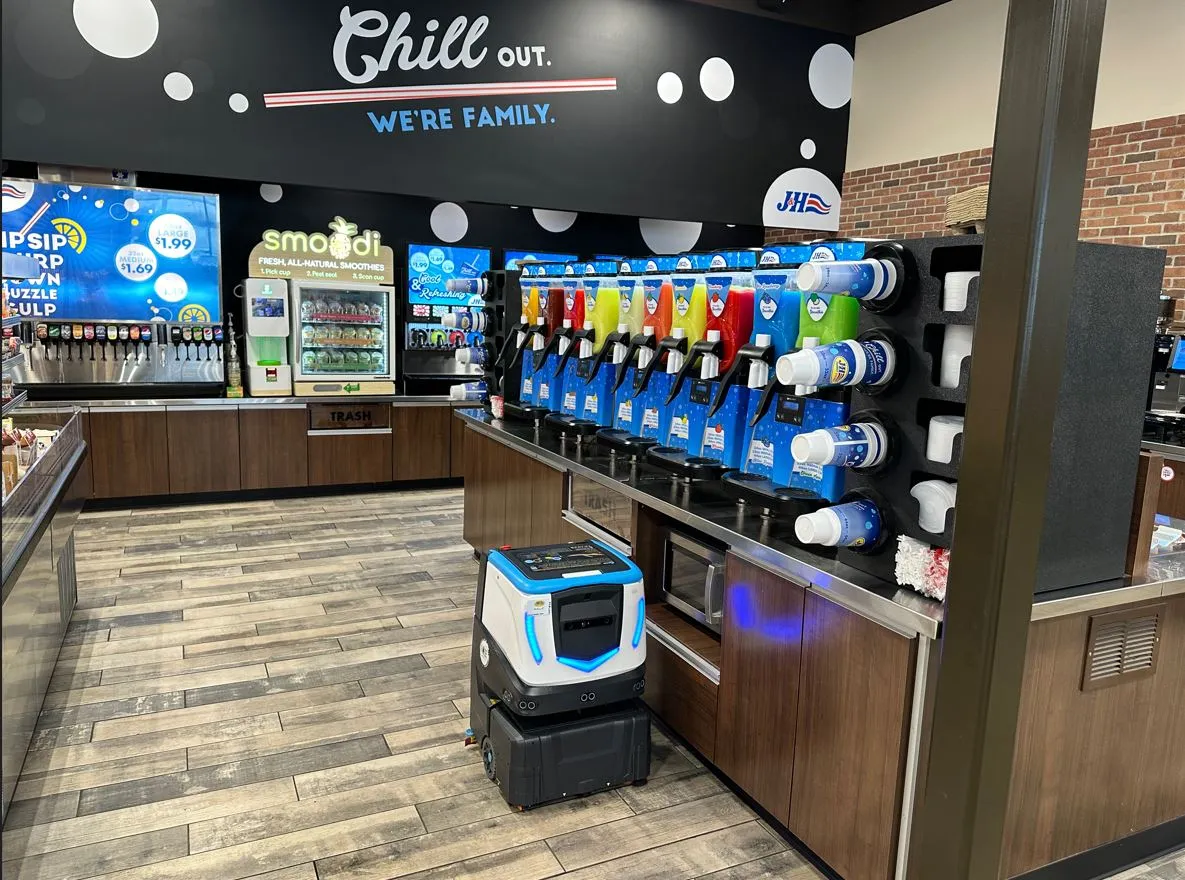
Consider the brand
Digital displays are “awesome,” said Richards, “especially pictures of product and signage outside on the street that draw people in.”
Richards has seen drink machinery that attracts attention through video screens that display someone pouring a drink into a glass or a burger being grilled in a way that makes it look appetizing.
But any digital media in the store needs to point to the c-store’s brand, said Lawshe.
Vendors often try to put up signage and digital media advertising their products inside and outside the store, he said. When a customer sees a display advertising a specific energy drink next to the front door, they may go in to buy that energy drink, said Lawshe. But ultimately the store’s not selling more energy drinks, just skewing sales towards one brand or another.
The store should instead promote how it sells energy drinks that meet the customers’ needs, he said.
“Influence your customer with good digital media that attracts your brand,” said Lawshe. “You’re not trying to sell Snickers or Monster. You’ll sell that, but you want to sell the things that make you special, that separate you from the competition.”
On the other hand, digital screens also allow retailers to show customers not just what they are selling but what they mean to the community by telling their story and displaying community groups they support, said Lenard.
Thinking beyond the technology
New technologies can help keep stores clean and make the lives of employees easier, but just adding it doesn’t mean it will be effective. Retailers need to make sure the store’s layout can properly accommodate it and that customers will actually embrace it.
If a c-store is using an automated floor cleaner like the ones Kum & Go and RaceTrac have piloted, they need to design the space so that the machine can clean the entire store — meaning walkways need to be wide enough and floors need to be clear.
“Think through when you design, when you remodel, or you build a new store, what tools do your employees need to do a good job?” said Lawshe. “Design to what your technology is.”
Installing technology in the right location is just a starting point, Lawshe said. “You have to entice, you have to embrace it with your customers.”
The kiosk, after all, can’t do everything for the store, Lawshe added. There needs to be a customer service agent out on the floor, teaching people to use the technology and explaining why they should want to use it. Retailers can even entice people to use it by offering a free cup of coffee or a discount when they return, he said.
“If you don’t give them the reasons and you don’t give them the explanation, if you don’t entice them, then they’re not going to do it,” Lawshe said.


